Themed collection 10th Anniversary of the Youth Innovation Promotion Association of the Chinese Academy of Science

Metal and metal oxide amorphous nanomaterials towards electrochemical applications
Amorphous nanomaterials have aroused extensive interest due to their unique properties. Their performance is highly related with their distinct atomic arrangements, which have no long-range order but possess short- to medium-range order.
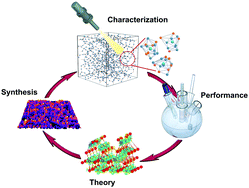
Chem. Commun., 2022,58, 223-237
https://doi.org/10.1039/D1CC04141J
Transition-metal difluorocarbene complexes
We review the recent developments in the chemistry of transition-metal difluorocarbenes, including bonding and utility of M![[double bond, length as m-dash]](https://www.rsc.org/images/entities/char_e001.gif) CF2 complexes.
CF2 complexes.
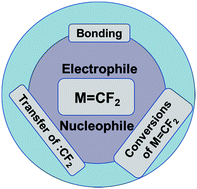
Chem. Commun., 2021,57, 9316-9329
https://doi.org/10.1039/D1CC04029D
Functional supramolecular gels based on poly(benzyl ether) dendrons and dendrimers
The design strategies and the gelation mechanism of poly(benzyl ether) dendritic gels, along with their potential applications, are discussed.
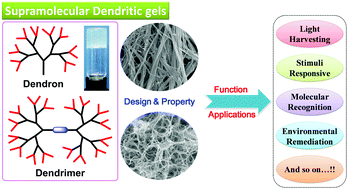
Chem. Commun., 2022,58, 8736-8753
https://doi.org/10.1039/D2CC03040C
Selective oxidation conversion of methanol/dimethyl ether
Synthesizing high value-added oxygenated chemicals through the oxidation process is a new and important research direction for high-quality conversion of methanol/DME.
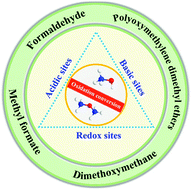
Chem. Commun., 2022,58, 4687-4699
https://doi.org/10.1039/D1CC07276E
Improvement of adsorption and catalytic properties of zeolites by precisely controlling their particle morphology
The adsorption and catalytic performance of zeolites, dependent on the diffusion path, can be enhanced via precisely regulating their particle morphologies.

Chem. Commun., 2022,58, 2041-2054
https://doi.org/10.1039/D1CC05537B
Recent advances in fluorescent probes for lipid droplets
This feature article discusses the recent advances in the design strategies, structural features and applications of fluorescent probes for lipid droplets.
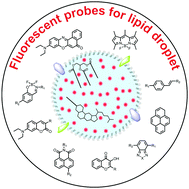
Chem. Commun., 2022,58, 1495-1509
https://doi.org/10.1039/D1CC05717K
Chemical conversion based on the crystal facet effect of transition metal oxides and construction methods for sharp-faced nanocrystals
The facet effects of several important transition metal oxides in many chemical reactions are presented, and typical synthesis methods for their sharp-faced nanocrystals are summarized.
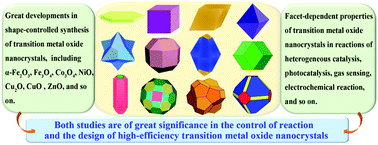
Chem. Commun., 2022,58, 908-924
https://doi.org/10.1039/D1CC06721D
Noble-metal based single-atom catalysts for the water-gas shift reaction
An overview of noble-metal based single-atom catalysts from catalyst compositions to reaction mechanisms for the water–gas shift reaction.
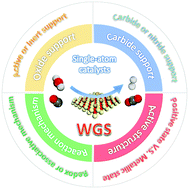
Chem. Commun., 2022,58, 208-222
https://doi.org/10.1039/D1CC04051K
Recent advances in luminescent metal–organic frameworks and their photonic applications
In this feature article, we summarise the recent developments in luminescent metal–organic frameworks, including their emission mechanisms and photonic applications ranging from photonic barcodes to miniaturized lasers.
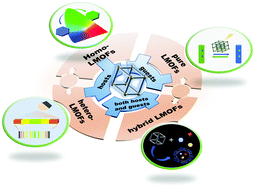
Chem. Commun., 2021,57, 13678-13691
https://doi.org/10.1039/D1CC05541K
Asymmetric hydrogenation of O-/N-functional group substituted arenes
This feature article focuses on the progress in catalytic asymmetric hydrogenation and transfer hydrogenation of O/N substituted arenes.
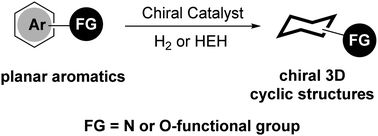
Chem. Commun., 2021,57, 12741-12753
https://doi.org/10.1039/D1CC04722A
Role of fluorine on the structure and second-harmonic-generation property of inorganic selenites and tellurites
Inclusion of the most electronegative fluorine can regulate the distortion direction and magnitude of the structure, bandgap, and second-harmonic-generation (SHG) efficiency of materials effectively.
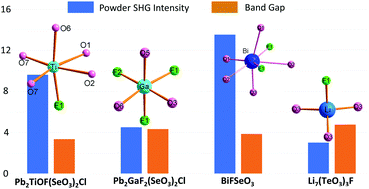
Chem. Commun., 2021,57, 12575-12586
https://doi.org/10.1039/D1CC04818J
Nanoscale covalent organic frameworks: from controlled synthesis to cancer therapy
The controlled synthesis methods and the applications of nanoscale covalent organic frameworks in cancer therapy are summarized in this feature article.
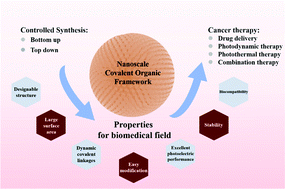
Chem. Commun., 2021,57, 12417-12435
https://doi.org/10.1039/D1CC04846E
Tribochemistry of superlubricating amorphous carbon films
The recent progress in the superlubricity mechanism and properties regulation of DLC films is introduced from the perspective of tribochemistry.
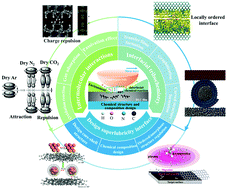
Chem. Commun., 2021,57, 11776-11786
https://doi.org/10.1039/D1CC04119C
Germatranes and carbagermatranes: (hetero)aryl and alkyl coupling partners in Pd-catalyzed cross-coupling reactions
The synthesis and Pd-catalyzed cross-couplings of structure-modified (hetero)aryl germatranes and alkyl carbagermatranes have been established.
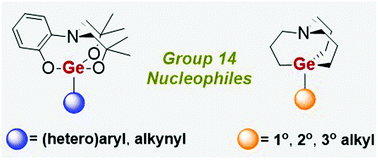
Chem. Commun., 2021,57, 11764-11775
https://doi.org/10.1039/D1CC04373K
Atomically dispersed metal catalysts on nanodiamond and its derivatives: synthesis and catalytic application
The recent progress in the synthesis and catalytic application of atomically dispersed metal catalysts on nanodiamond and its derivatives is systematically summarized.
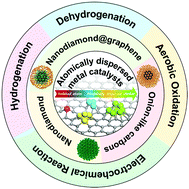
Chem. Commun., 2021,57, 11591-11603
https://doi.org/10.1039/D1CC05202K
Perovskite photodetectors and their application in artificial photonic synapses
Hybrid perovskite photonic synapses can be modulated with photoelectric signals, and have great potential for the development of artificial intelligence.
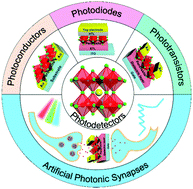
Chem. Commun., 2021,57, 11429-11442
https://doi.org/10.1039/D1CC04447H
Brush-like polymers: design, synthesis and applications
Polymer brushes have emerged as one of the most important means of surface modification. We summarise efficient methods for the fabrication of polymer brushes. In addition, we highlight the topology and potential applications of polymer brushes.
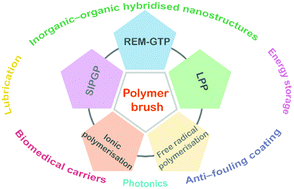
Chem. Commun., 2021,57, 10484-10499
https://doi.org/10.1039/D1CC03940G
Molecular structures and magnetic properties of endohedral metallofullerenes
Endohedral metallofullerenes are fascinating materials. Recent progress on molecular structures and magnetic properties of metallofullerenes is summarized in this feature article.

Chem. Commun., 2021,57, 10317-10326
https://doi.org/10.1039/D1CC04218A
Stimuli-responsive polypeptides for controlled drug delivery
We summarize the advances of polypeptide-based drug delivery systems that respond to various physiological stimuli for controlled drug delivery applications.
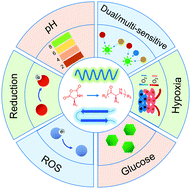
Chem. Commun., 2021,57, 9489-9503
https://doi.org/10.1039/D1CC04053G
An Fe-based single-atom nanozyme with multi-enzyme activity for parallel catalytic therapy via a cascade reaction
Fe-based single-atom nanozymes with multi-enzyme activities and excellent photothermal properties were synthesized for highly efficient parallel catalytic therapy and photothermal therapy.
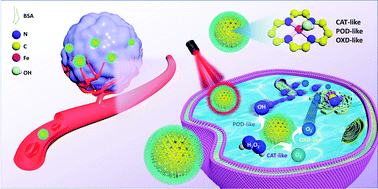
Chem. Commun., 2022,58, 7924-7927
https://doi.org/10.1039/D2CC02975H
Atomic controllable anchoring of uranium into zirconate pyrochlore with ultrahigh loading capacity
Unavailable high loading of uranium with controllabe doping site on pyrochlore was achieved through molten salt synthesis.
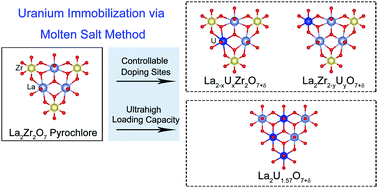
Chem. Commun., 2022,58, 3469-3472
https://doi.org/10.1039/D2CC00576J
Photoredox catalyzed C–H trifluoroethylamination of heteroarenes
The first C–H trifluoroethylamination of heteroarenes with N-trifluoroethyl hydroxylamine reagents under photoredox catalysis has been described.

Chem. Commun., 2022,58, 1346-1349
https://doi.org/10.1039/D1CC06688A
Encapsulation of atomically dispersed Pt clusters in porous TiO2 for semi-hydrogenation of phenylacetylene
The multilayered catalyst 1.91%Pt@TiO2 with atomically dispersed Pt clusters shows excellent performance in the semi-hydrogenation of phenylacetylene.
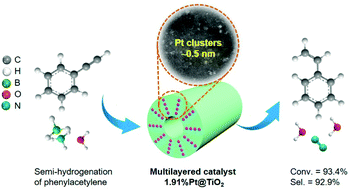
Chem. Commun., 2022,58, 1191-1194
https://doi.org/10.1039/D1CC06682J
2D Hybrid perovskite incorporating cage-confined secondary ammonium cations toward effective photodetection
A Ruddlesden–Popper hybrid perovskite was assembled by confining secondary ammonium cations into the inorganic framework, for which 2D quantum-well motifs render a fascinating photoresponse and effective photodetection properties.

Chem. Commun., 2022,58, 561-564
https://doi.org/10.1039/D1CC05705G
The effect of the particle size on Fischer–Tropsch synthesis for ZSM-5 zeolite supported cobalt-based catalysts
The highly selective synthesis of various middle distillate fuels including gasoline, jet fuel and diesel range hydrocarbons is achieved for hierarchical ZSM-5 zeolite supported cobalt catalysts with different cobalt particle sizes for syngas conversion.
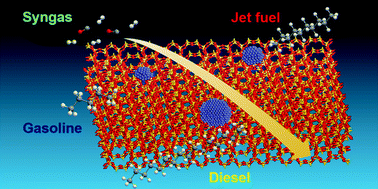
Chem. Commun., 2021,57, 13522-13525
https://doi.org/10.1039/D1CC04844A
Oxidative coupling of methane over Mo–Sn catalysts
The selectivity of C2 hydrocarbons reached 98.1%, along with the methane conversion of 8.6% over Mo1Sn3 catalyst. The deep oxidation of methane to CO2 was significantly inhibited due to the moderately strong basic sites and reactive oxygen species.
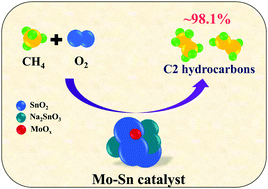
Chem. Commun., 2021,57, 13297-13300
https://doi.org/10.1039/D1CC04821J
Heterometallic Al6Zn12 nano-plate with π-conjugated ligand: synthesis and nonlinear absorption properties
Presented herein is the synthesis of a heterometallic hybrid compound used as a candidate for third-order nonlinear optical (NLO) materials.
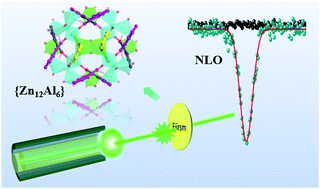
Chem. Commun., 2021,57, 12820-12823
https://doi.org/10.1039/D1CC05919J
Enhanced syngas production from CO2 photoreduction over CoPd alloy modified NiAl-LDH under visible light
A bimetallic CoPd alloy modified NiAl-LDH achieved enhanced syngas production by adjusting the Schottky barrier height to facilitate the separation and transfer of charge carriers and optimize the active sites for CO2 and H2O activation.
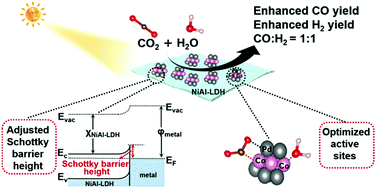
Chem. Commun., 2021,57, 11629-11632
https://doi.org/10.1039/D1CC04863E
A combined DFTB nanoreactor and reaction network generator approach for the mechanism of hydrocarbon combustion
We explored the mechanism of ethylene combustion by combining a density functional tight-binding based nanoreactor molecular dynamic method (DFTB-NMD) and a hidden Markov model (HMM) based reaction network generator approach.
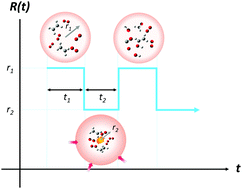
Chem. Commun., 2021,57, 11633-11636
https://doi.org/10.1039/D1CC04736A
Crystal facet modulation of Bi2WO6 microplates for spatial charge separation and inhibiting reverse reaction
We experimentally demonstrated that spatial charge separation can take place between the {010} and {001} facets of Bi2WO6 microplates.
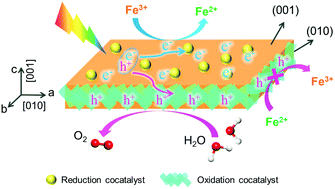
Chem. Commun., 2021,57, 11637-11640
https://doi.org/10.1039/D1CC04942A
Investigation of the sublimation mechanism of GeSe and GeS
We demonstrate the diatomic molecule sublimation mechanism of GeSe and GeS through a detailed theoretical and experimental investigation.
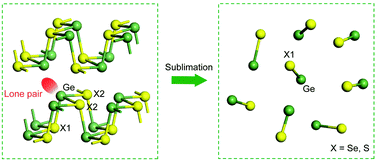
Chem. Commun., 2021,57, 11461-11464
https://doi.org/10.1039/D1CC03895H
Solvent-regulated chiral exciton coupling and CPL sign inversion of an amphiphilic glutamide-cyanostilbene
The chiral exciton couplings within a Y-shaped amphiphilic glutamide-cyanostilbene could be significantly biased by solvent polarity and hydration effect, which led to sign inversion of both CD and CPL of its assemblies.
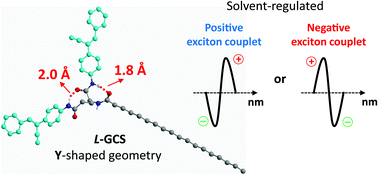
Chem. Commun., 2021,57, 11314-11317
https://doi.org/10.1039/D1CC04471K
A metal-porphyrinic framework film as an efficient optical limiting layer in an electro-optical switchable device
Herein we report a 2D surface-coordinated porphyrinic metal–organic framework film (SURMOF) CuTCPP prepared by a layer by layer method as an optical limiting layer in a polymer-dispersed liquid crystal (PDLC) device.
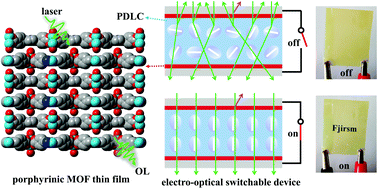
Chem. Commun., 2021,57, 10166-10169
https://doi.org/10.1039/D1CC04513J
Can nitrogen-based complex hydrides be a hydrogen isotope separation material?
The nitrogen-based complex hydride Li–N–H has positive thermodynamic isotope effects with a separation factor of 1.42.
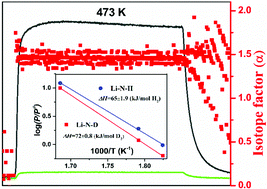
Chem. Commun., 2021,57, 10063-10066
https://doi.org/10.1039/D1CC03825G
Design of ultra-high luminescent polymers for organic photovoltaic cells with low energy loss
Here, a new polymer named PBTT-C4 was designed based on carboxylate-functionalized thieno[3,2-b]thiophene units. Both pure polymer and its blend film with acceptors possess high luminescent properties, which is beneficial to the decrease of voltage loss.
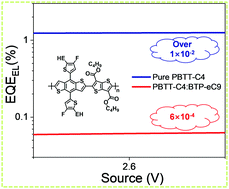
Chem. Commun., 2021,57, 9132-9135
https://doi.org/10.1039/D1CC02706A
In situ formed Co from a Co–Mg–O solid solution synergizing with LiH for efficient ammonia synthesis
A cobalt magnesium oxide solid solution (Co–Mg–O) supported LiH catalyst has been synthesized, in which LiH functions both as a strong reductant for the in situ formation of Co metal nanoparticles and a key active component for ammonia synthesis catalysis.
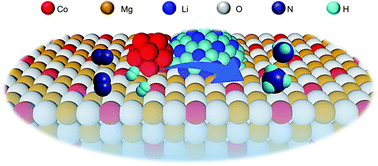
Chem. Commun., 2021,57, 8576-8579
https://doi.org/10.1039/D1CC03063A
Tertiary cyclopropyl carbagermatranes: synthesis and cross-coupling
Tertiary cyclopropyl carbagermatranes acting as robust nucleophiles for the synthesis of cyclopropane with quaternary centers.
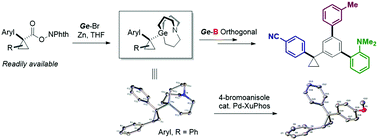
Chem. Commun., 2021,57, 8143-8146
https://doi.org/10.1039/D1CC02930D
Pd-catalyzed selective tetrafunctionalization of diiodo-o-carboranes
Highly selective Pd-catalyzed double alkenylation-iodo migration cascade reaction of diiodo-o-carboranes has been developed, leading to the one-pot tetrafunctionalization of o-carboranes with sequential activation of two cage B–I and two B–H bonds.
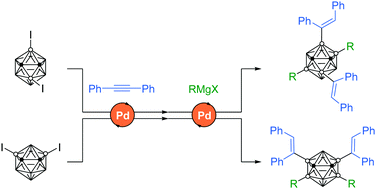
Chem. Commun., 2021,57, 8071-8074
https://doi.org/10.1039/D1CC03449A
Flame-made Cu/ZrO2 catalysts with metastable phase and strengthened interactions for CO2 hydrogenation to methanol
The strengthened Cu–Zr interactions in FSP-Cu/ZrO2 were beneficial for the adsorption of bi-HCOO* and the generation of methoxy species (*OCH3) at the interface by enhancing Cu+ species and Ov compared to the one made by the traditional method.

Chem. Commun., 2021,57, 7509-7512
https://doi.org/10.1039/D1CC02784K
Hg3(Te3O8)(SO4): a new sulfate tellurite with a novel structure and large birefringence explored from d10 metal compounds
Four new sulfate tellurites have been found from d10 Metal–Te4+–SO42− systems and the mercury compound, Hg3(Te3O8)(SO4), exhibits the largest birefringence among the reported metal sulfate tellurites to date.

Chem. Commun., 2021,57, 7039-7042
https://doi.org/10.1039/D1CC02494A
Access to chiral γ-butenolides via palladium-catalyzed asymmetric allylic C–H alkylation of 1,4-dienes
Asymmetric allylic C–H alkylation of 1,4-pentadienes with α-angelica lactones has been developed by tri-axial phosphoramidite-palladium catalysis.
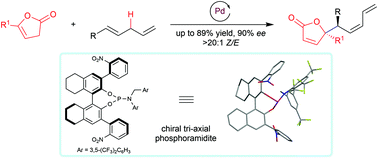
Chem. Commun., 2021,57, 6748-6751
https://doi.org/10.1039/D1CC02295D
Enantioselective synthesis of polycyclic pyrrole derivatives by iridium-catalyzed asymmetric allylic dearomatization and ring-expansive migration reactions
A cascade Ir-catalyzed asymmetric allylic daromatization/ring-expansive migration reaction affords tetrahydropyrrolo[1,2-c]pyrimidine derivatives in good yields with high enantioselectivity.

Chem. Commun., 2021,57, 5390-5393
https://doi.org/10.1039/D1CC01929E
A tumor-targeted near-infrared fluorescent probe for HNO and its application to the real-time monitoring of HNO release in vivo
A tumor-targeted near-infrared fluorescent probe has been developed for monitoring the intratumoral release of HNO from its donors in vivo.
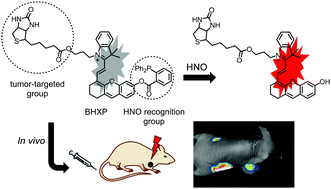
Chem. Commun., 2021,57, 5063-5066
https://doi.org/10.1039/D1CC01462E
Chiral induction in boron imidazolate frameworks: the construction of cage-based absolute helices
Two cage-based absolute helices were prepared in achiral reaction systems. The presence of appropriate chiral inducers can control the helical orientation of bulk samples, which further act on the separation of racemic 1-phenylethanol.
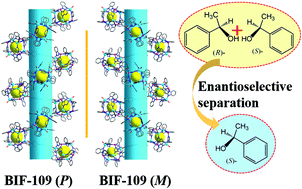
Chem. Commun., 2021,57, 5020-5023
https://doi.org/10.1039/D1CC01249E
About this collection
The Youth Innovation Promotion Association, Chinese Academy of Sciences (YIPA-CAS), was established in June 2011 as an innovative measure taken by the Chinese Academy of Sciences to comprehensively train young scientific and technological talents under the age of 35. Through effective organization and support, YIPA-CAS unites the young scientific and technological researchers of the whole academy; broadens their academic horizons; promotes mutual and interdisciplinary exchange; enhances the ability to organize scientific research activities; and trains a new generation of academic and technological leaders. The branch of Chemistry and Materials is an important association of YIPA-CAS devoted to the career development of young scientists and connecting scientists, markets, universities, and CAS.
Organized by Dr. Zhigang Gu (Fujian Institute of Research on the Structure of Matter, CAS) and Dr. Yuyuan Lu (Changchun Institute of Applied Chemistry, CAS), with Chemical Communications, this collection celebrates the 10th anniversary of the YIPA-CAS and includes review and Communication papers contributed by members of YIPA-CAS in a variety of fields across chemistry, materials, and interdisciplinary research.